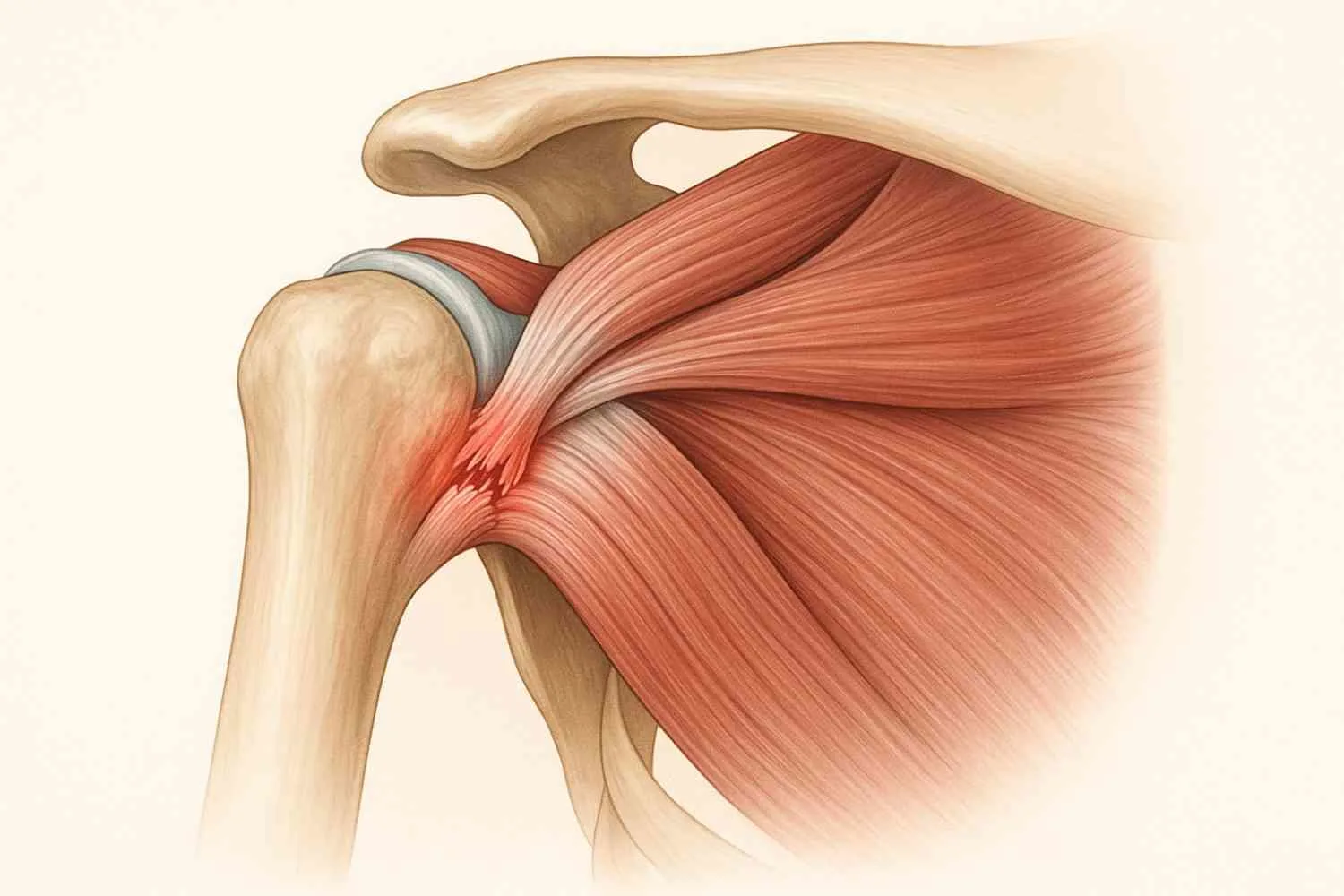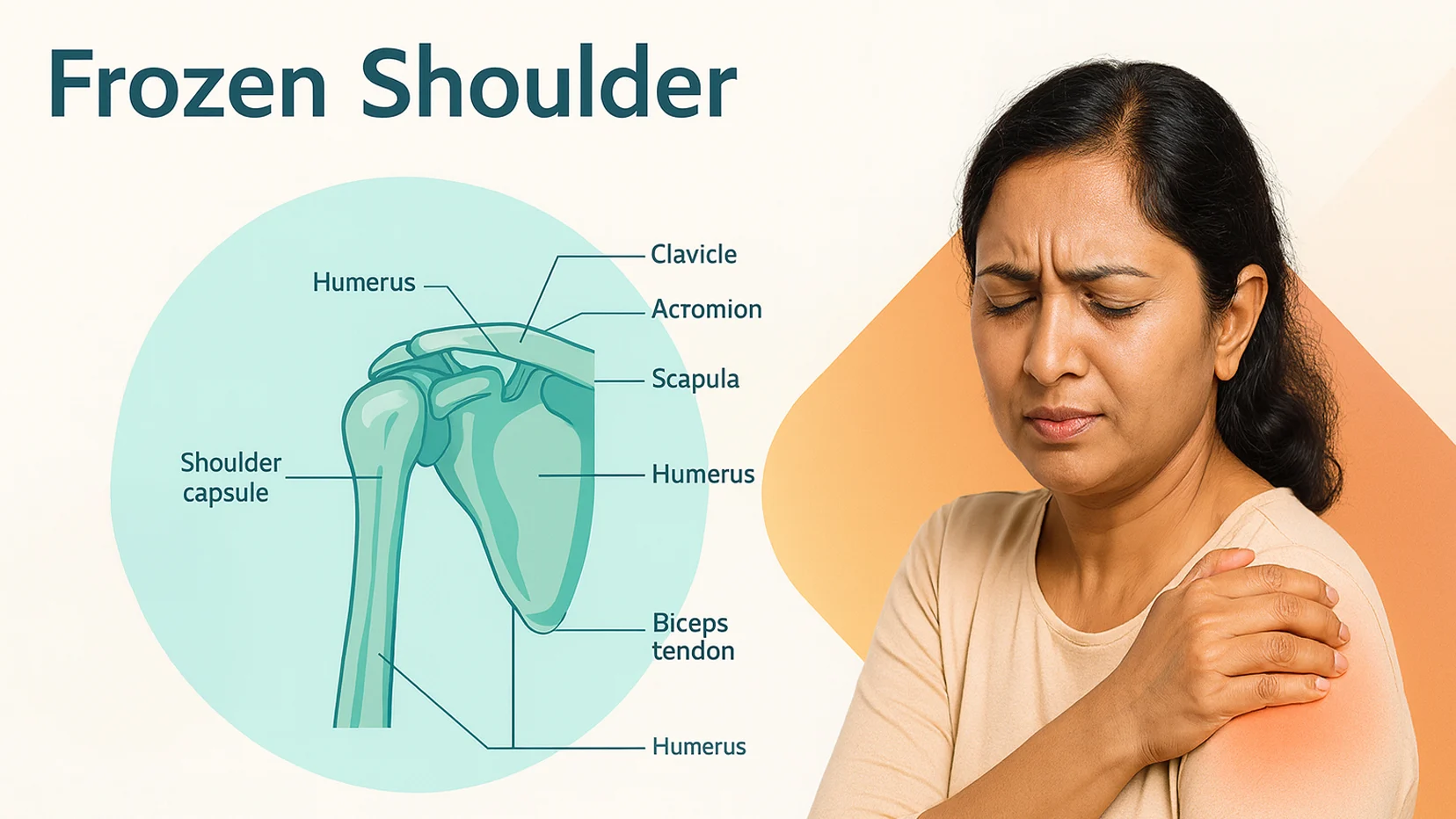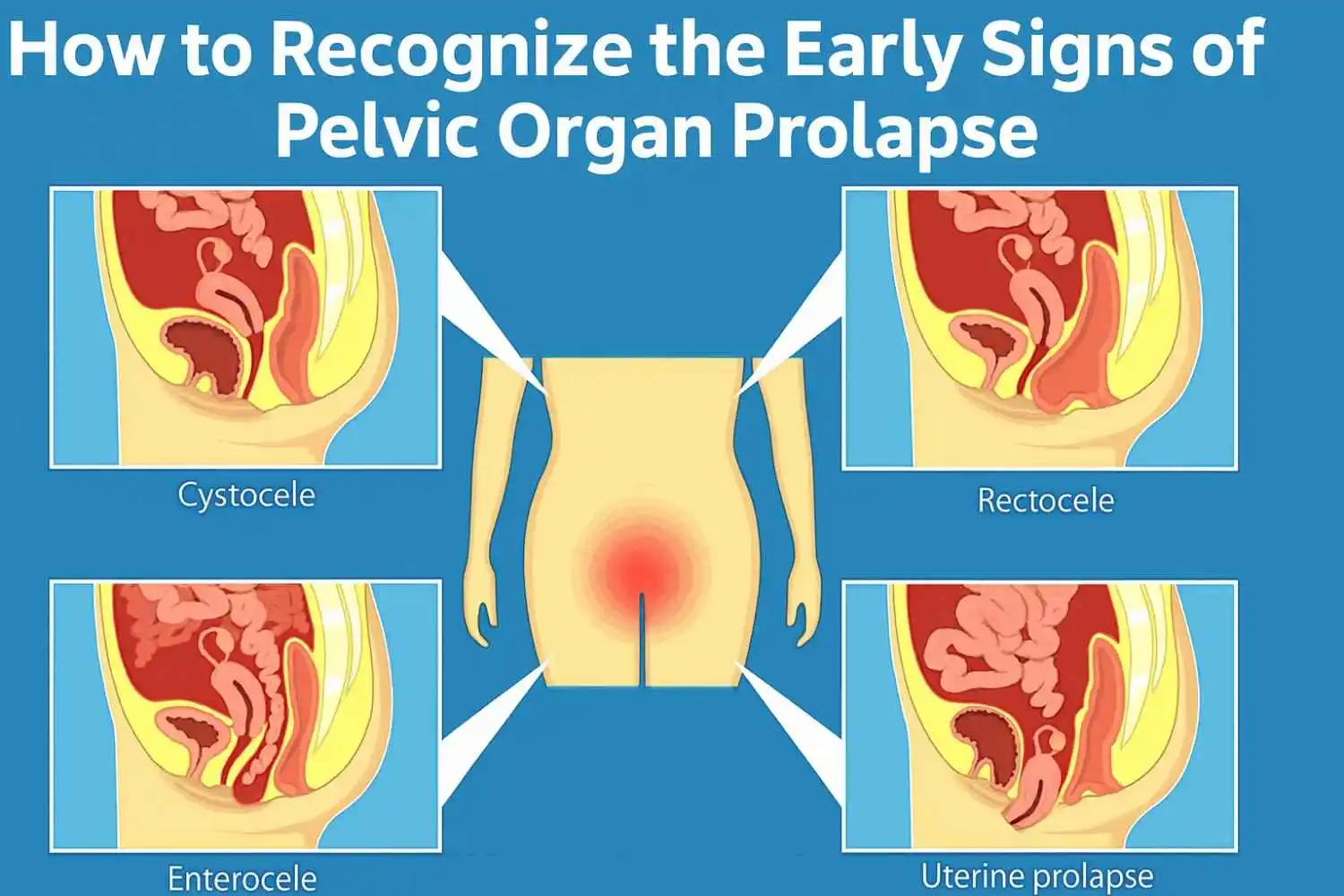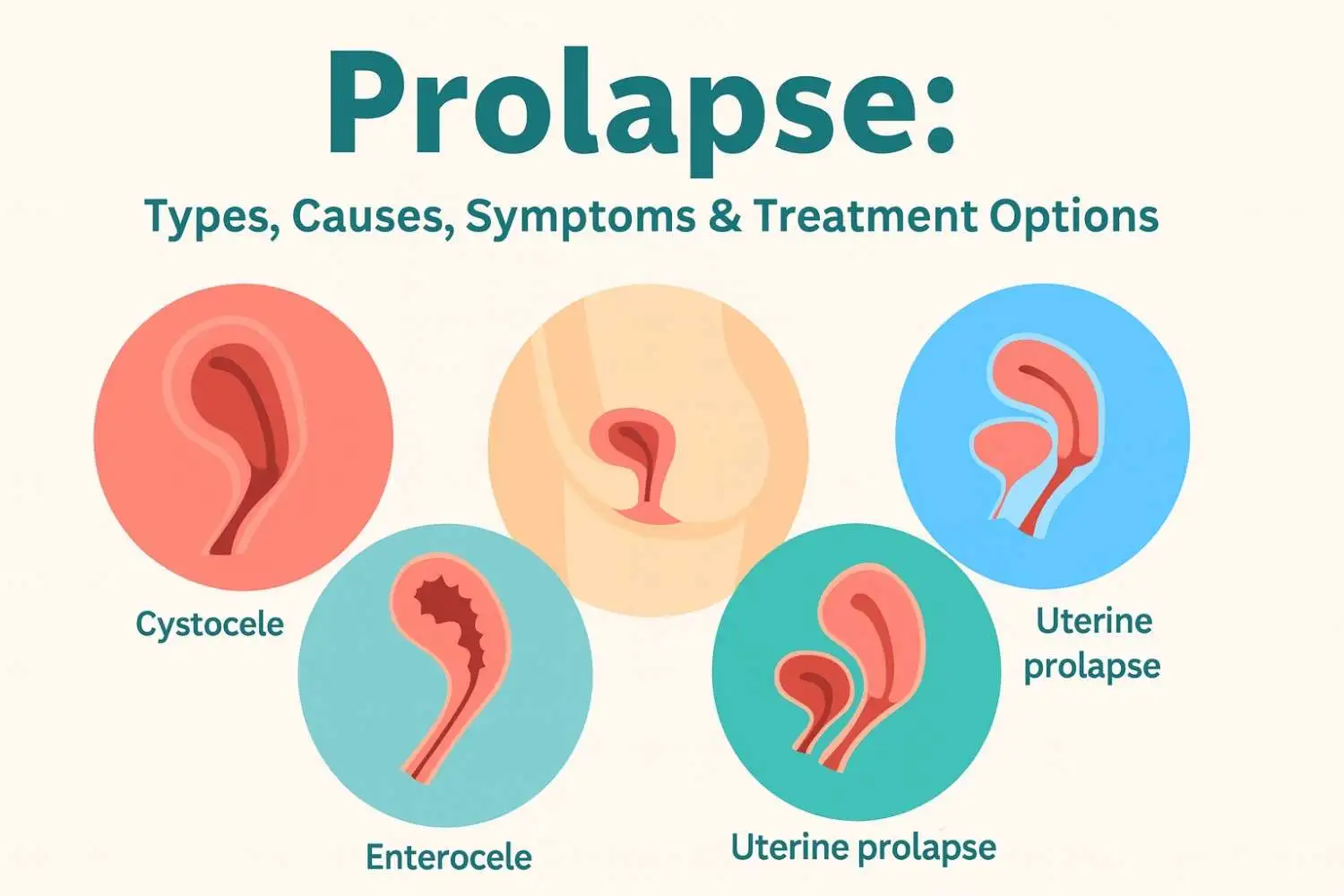




Author: Dr. Garima Bishwas
Yoga 0
Tennis elbow pain — medically known as lateral epicondylitis — is one of the most common causes of elbow discomfort among athletes, desk workers, and anyone who frequently uses their arms for repetitive tasks. Despite its name, you don’t have to play tennis to experience this condition.
Through this comprehensive guide, we’ll explore the causes, symptoms, and diagnosis of tennis elbow, and most importantly, how tennis elbow physiotherapy can provide lasting relief through targeted exercises, manual therapy, and proper posture correction.
What Is Tennis Elbow Pain?
Tennis elbow, or lateral epicondylitis, is a painful condition caused by inflammation of the tendons that attach to the bony prominence on the outer side of your elbow. These tendons connect your forearm muscles to your elbow and help in wrist and finger extension.
When these muscles are overused or strained repeatedly — for instance, through gripping, typing, or racquet sports — small tears can form in the tendon, leading to elbow tendon inflammation and repetitive strain injury. The result? Persistent pain, weakness, and discomfort in the outer elbow.
Causes of Tennis Elbow
Tennis elbow can affect anyone, not just athletes. The main causes of tennis elbow include:
-
Repetitive wrist or arm movements – Common in typing, painting, or racquet sports.
-
Overuse of forearm muscles – Continuous strain without rest leads to tendon micro-tears.
-
Poor posture while typing, lifting, or playing sports – Causes uneven stress on elbow tendons.
-
Sudden increase in physical activity – Starting intense workouts without conditioning.
-
Incorrect sports technique – Especially in tennis, badminton, or golf, improper swing mechanics increase elbow stress.
This repetitive motion injury leads to overuse tendon pain, which can worsen if left untreated.
Symptoms of Tennis Elbow
Recognizing tennis elbow symptoms early helps prevent chronic pain. Common signs include:
-
Pain on the outer elbow that may radiate down the forearm.
-
Weak grip strength — difficulty holding or shaking hands.
-
Pain while lifting objects, opening jars, or turning doorknobs.
-
Tenderness and stiffness around the elbow joint.
-
Pain that worsens with repetitive activity or wrist extension.
If you experience persistent elbow pain, especially during gripping or lifting, consult a physiotherapist for early intervention.
Tennis Elbow Pain Diagnosis
The tennis elbow diagnosis process typically involves:
-
Physical examination: The physiotherapist or doctor will check tenderness around the lateral epicondyle and assess movement range.
-
Medical history review: Understanding your occupation, sports activity, or repetitive motion patterns.
-
Imaging tests: In severe or chronic cases, ultrasound or MRI for elbow pain can detect tendon tears or inflammation.
A proper elbow examination ensures accurate diagnosis and an effective treatment plan tailored to your condition.
Physiotherapy Treatment for Tennis Elbow Pain
1. Goals of Physiotherapy
-
Reducing pain and inflammation through physical modalities and rest.
-
Restoring strength and flexibility of the forearm and wrist muscles.
-
Preventing recurrence by correcting movement patterns and posture.
2. Common Physiotherapy Techniques
1. Manual Therapy
Hands-on techniques like soft tissue massage and joint mobilization reduce stiffness, improve circulation, and relieve pain.
2. Ultrasound Therapy:
Uses sound waves to enhance blood flow and accelerate tendon healing.
3. Laser Therapy or Shockwave Therapy:
These advanced methods help treat chronic lateral epicondylitis, stimulating tissue repair and reducing inflammation.
4. Strengthening Exercises:
Focused on forearm extensors, these physiotherapy exercises help rebuild tendon resilience.
5. Stretching Exercises:
Improves flexibility and releases tension in the wrist and forearm muscles.
6. Taping or Bracing:
Functional taping or an elbow brace supports the joint during activity and reduces strain on the tendons.
7. Ergonomic Correction:
Physiotherapists educate patients on proper posture, keyboard height, wrist angles, and activity modifications to prevent reinjury.
3. Example Physiotherapy Exercises for Tennis Elbow
Here are some physiotherapy exercises commonly prescribed by professionals:
1. Wrist Extension Stretch
-
Extend your affected arm straight.
-
Use your other hand to gently bend the wrist downwards until a mild stretch is felt.
-
Hold for 15–20 seconds and repeat 3 times.
2. Forearm Pronation/Supination with Light Weights
-
Hold a light dumbbell or water bottle.
-
Rotate your forearm palm-up and palm-down slowly.
-
Do 10–12 repetitions per set.
3. Isometric Wrist Extension Hold
-
Rest your forearm on a table, palm facing down.
-
Push the back of your hand gently against resistance (like the edge of a table) without moving the wrist.
-
Hold for 10 seconds; repeat 10 times.
4. Eccentric Loading Exercises
-
Hold a lightweight and extend your wrist upward using your good hand.
-
Slowly lower it back down using your affected hand.
-
Repeat 10–15 times, 2–3 sets daily.
These targeted physiotherapy exercises for tennis elbow strengthen tendons, improve flexibility, and reduce long-term discomfort.
Home Remedies and Self-Care Tips
While physiotherapy is the gold standard, several tennis elbow home treatments can complement recovery:
-
Rest: Avoid overuse or repetitive strain on your forearm.
-
Ice Therapy: Apply ice packs for 15–20 minutes, 2–3 times daily, to reduce swelling.
-
Use an elbow strap or brace: Helps offload tendon stress during activity.
-
Gentle forearm stretches: Maintain flexibility and prevent stiffness.
-
Correct wrist posture: Keep wrists neutral while typing or lifting to avoid strain.
These self-care steps for tennis elbow enhance healing and reduce the risk of recurrence.
Tennis Elbow Pain Prevention Tips
Preventing tennis elbow is easier than treating it. Follow these practical strategies to keep your elbows pain-free:
-
Warm up before activities: Simple forearm stretches prepare tendons for movement.
-
Use ergonomic equipment: Ensure your work setup promotes neutral wrist alignment.
-
Strengthen wrist and forearm muscles: Regular strengthening builds endurance.
-
Take regular breaks: Avoid prolonged repetitive tasks.
-
Learn proper sports technique: Get coaching to correct your grip and swing mechanics.
Implementing these ergonomic tips can greatly help prevent tennis elbow and other repetitive strain injuries.
When to See a Physiotherapist for Tennis Elbow Pain
Don’t ignore elbow pain that persists beyond a few days. You should see a physiotherapist for tennis elbow if:
-
Pain lasts for more than 2–3 weeks.
-
Pain interferes with daily activities like gripping or lifting.
-
You experience reduced wrist or elbow movement.
-
You notice recurring flare-ups even after resting.
A professional physiotherapist can assess your movement, identify muscle imbalances, and design a personalized rehabilitation program for chronic elbow pain.
Conclusion
Tennis elbow pain can be frustrating, but with the right tennis elbow physiotherapy, you can achieve full recovery and prevent recurrence. A structured combination of manual therapy, strengthening exercises, ergonomic corrections, and home care forms the foundation of effective treatment.
If you’re struggling with elbow pain or lateral epicondylitis, don’t wait—consult a physiotherapist for a personalized plan. With patience, consistency, and expert guidance, pain-free movement is within reach.
Frequently Asked Questions
Add comment






















.webp)





.jpg)






































